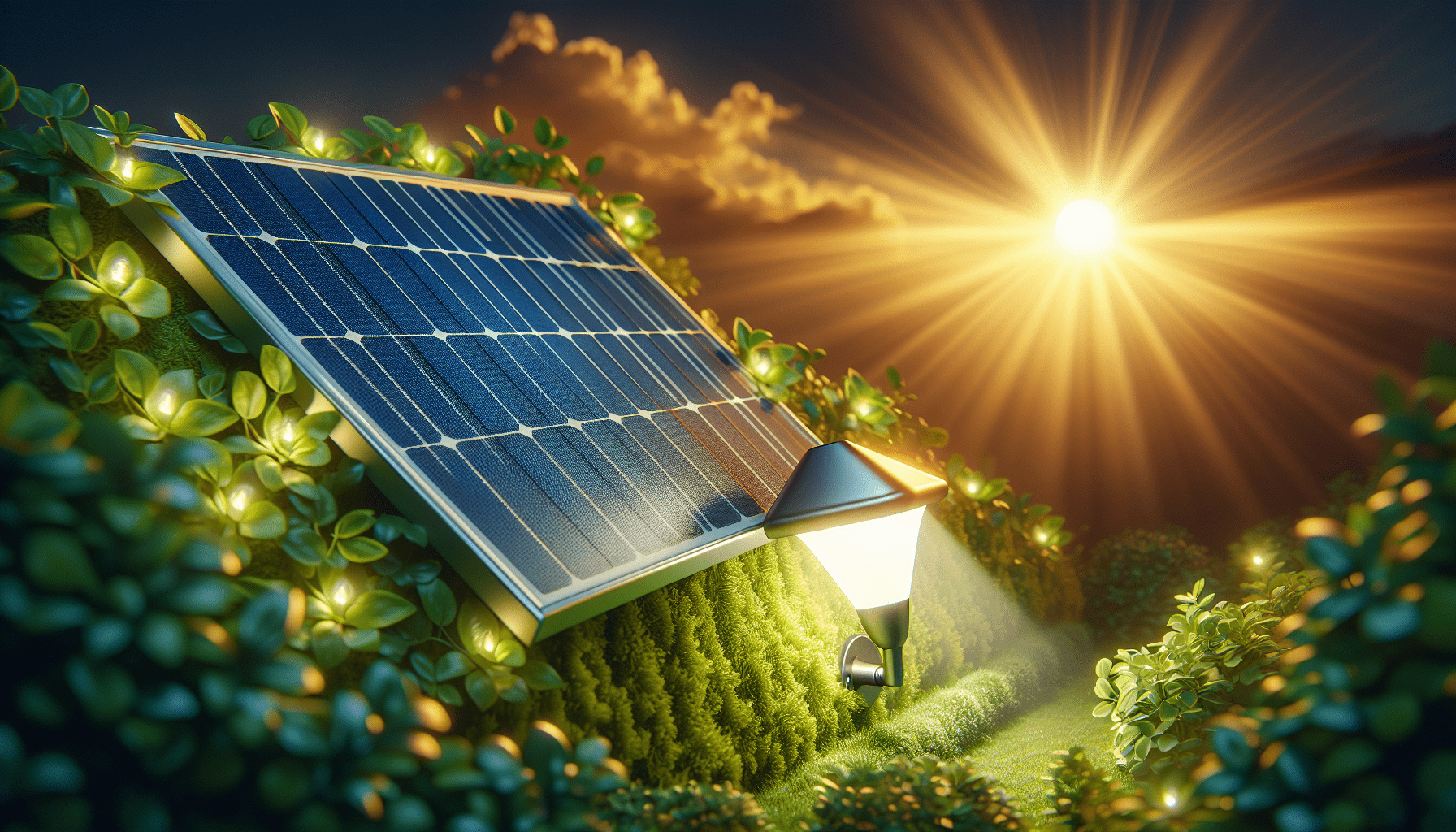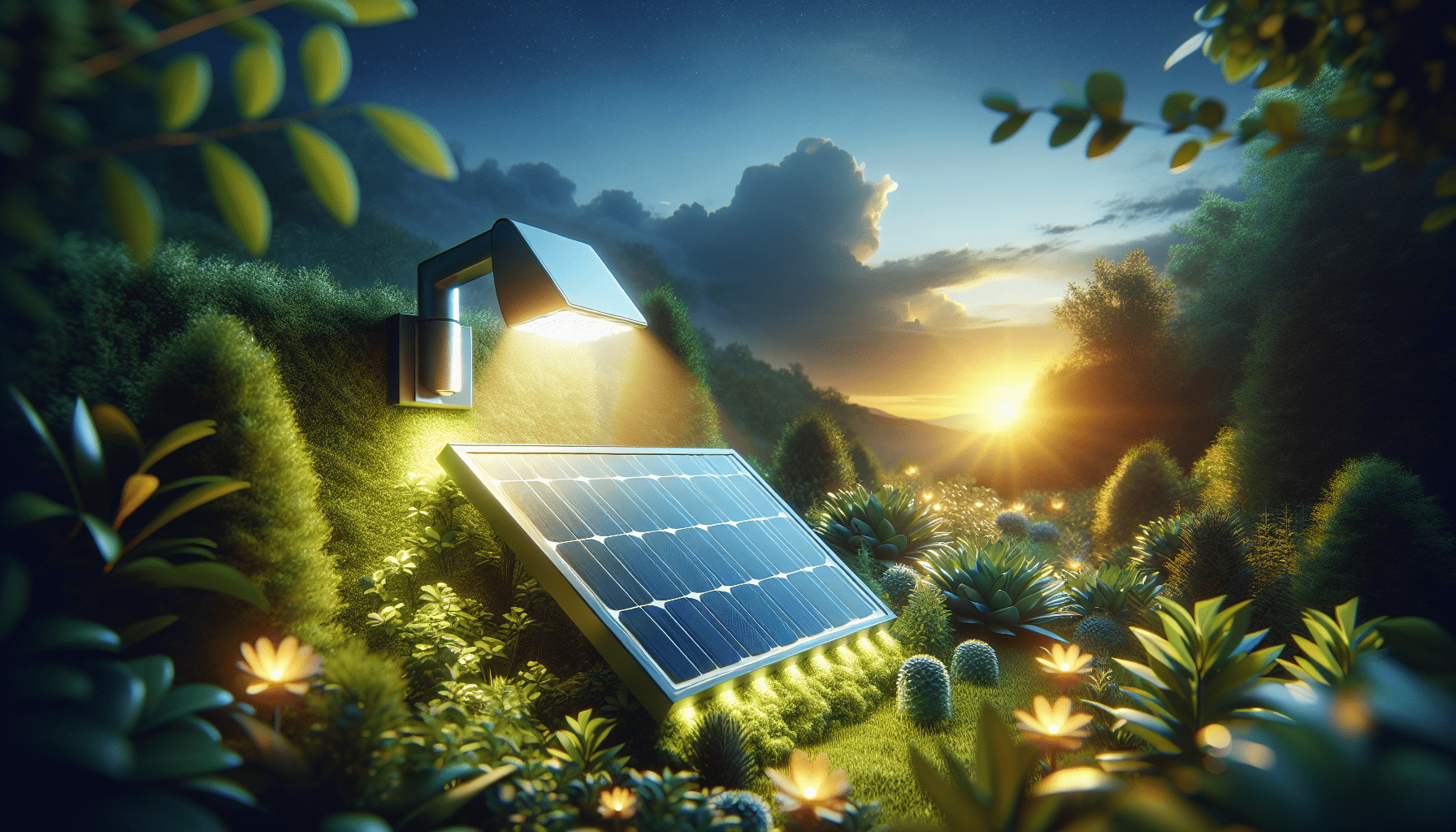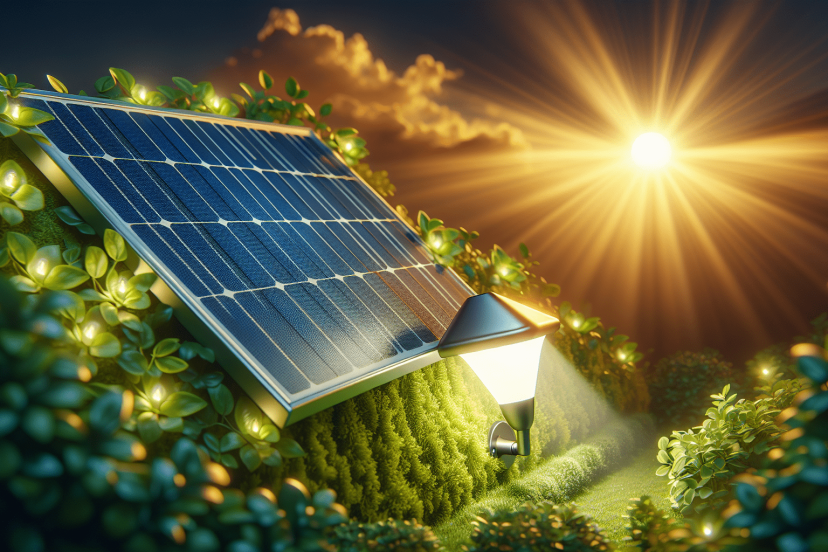Harnessing Solar Power for Efficient Motion-Activated Lighting
As an Amazon Associate, I earn from qualifying purchases, at no additional cost to you. Disclaimer
Have you ever considered how solar energy could transform your outdoor lighting? If you’re searching for a sustainable and efficient way to illuminate your surroundings, solar-powered motion-activated lighting might just be the perfect solution. This technology not only helps reduce electricity costs but also enhances the safety and security of your home. We’ll journey through the essential aspects of harnessing solar power for your lighting needs, turning you into an informed advocate for renewable energy in your own backyard.
Click Here to Switch to Solar for a Greener Future
Understanding Solar Power
Solar power is a cutting-edge technology that converts sunlight into electricity. By using photovoltaic cells, solar panels capture and convert solar energy into a usable power source. As a renewable and environmentally friendly option, solar power is proving to be a popular choice for homeowners globally, offering a clean and sustainable energy source.
How Solar Panels Work
At the core of solar power are solar panels. Made up of numerous solar cells, these panels utilize the photovoltaic effect to generate electricity. When sunlight hits these cells, it excites the electrons, creating an electric current. This direct current (DC) is then converted into alternating current (AC) using an inverter, making it suitable for home use.
Benefits of Solar Power
The advantages of solar power extend beyond environmental benefits. It’s an inexhaustible energy source that can significantly lower electricity bills. By reducing reliance on traditional electricity, solar power can also offer protection against fluctuating energy prices. Moreover, it contributes to reducing carbon footprints, making it an excellent choice for those concerned about climate change.
Introduction to Motion-Activated Lighting
Motion-activated lighting is a technology designed to improve energy efficiency by only turning on lights when movement is detected. This not only ensures convenience but also provides additional security by illuminating areas when they are most needed, such as when someone approaches your home at night.
How Motion Sensors Work
Motion sensors use infrared technology to detect changes in the surrounding environment. Essentially, these sensors look for alterations in the infrared radiation levels caused by moving objects. Upon detecting motion, they send a signal to activate the light. The sensors are highly sensitive and can differentiate between various motion levels, reducing the risk of false alarms.
Advantages of Motion-Activated Lighting
In addition to providing security, motion-activated lighting is highly energy-efficient. The lights only stay on when necessary, thus conserving energy compared to traditional lights that may remain on all night. By minimizing unnecessary electricity use, you’re contributing to an environmentally friendly lifestyle while also extending the lifespan of the bulbs.

Click Here to Discover Solar Solutions
Combining Solar Power with Motion-Activated Lighting
By merging solar power with motion-activated lighting, you achieve a perfect synergy for energy-efficient outdoor illumination. This combination leverages the renewable nature of solar power while minimizing energy consumption through motion detection. It’s a step toward a sustainable future, encouraging the use of clean energy technology in home settings.
Key Components of Solar-Powered Motion-Activated Lights
These lights consist of specific components working together to harness solar energy and respond to motion. Understanding these parts can help you make informed decisions when selecting or maintaining your lighting system.
Solar Panel: Captures and converts sunlight into electricity, storing it in batteries for later use.
Battery: Stores the converted electricity for nighttime use.
LED Light: Helps in providing bright and efficient illumination.
Motion Sensor: Detects movement and triggers the light to turn on.
Controller: Manages the flow of electricity from the solar panel to the battery and from the battery to the light.
Benefits of Integration
Integrating solar power with motion-activated lighting offers numerous benefits, with sustainability at the forefront. This integration ensures that you use clean energy efficiently, as lights are only used when necessary. It’s a smart investment that enhances your property’s value while reducing long-term energy costs and promoting a greener lifestyle.
Table: Benefits of Solar-Powered Motion-Activated Lights
| Benefit | Description |
|---|---|
| Energy Efficiency | Uses solar energy and minimal electricity through motion activation |
| Cost Savings | Reduces traditional electricity usage, lowering energy bills |
| Environmental Impact | Decreases carbon footprint and reliance on fossil fuels |
| Security Enhancement | Provides lighting in dark areas when motion is detected |
| Low Maintenance | Minimal upkeep due to the self-sustaining nature of solar energy |
Selecting the Right Solar-Powered Motion-Activated Lights
Choosing the right setup requires a careful evaluation of your needs and the available technology. Different light models vary in terms of brightness, motion detection range, and aesthetic design. It’s crucial to find one that matches your functionality and design preferences.
Factors to Consider
When selecting these lights, consider several critical factors to ensure you achieve the best performance and value for your investment.
- Illumination Range: Ensure the light covers the desired area.
- Brightness: Measured in lumens, look for a brightness level that meets your needs.
- Battery Capacity: Larger capacity ensures longer lighting times.
- Weather Resistance: Crucial for durability, especially in varying climates.
- Design and Aesthetics: Choose designs that enhance your landscape or home design.
Top Features to Look For
For optimal performance, identify lights that come with advanced features such as adjustable settings for sensitivity, duration, and dusk-to-dawn activation. Some models offer smartphone connectivity for enhanced control and customization.

Click Here to Take Control of Your Energy Needs
Installation and Maintenance Tips
Proper installation and maintenance are vital for optimal performance and longevity of solar-powered motion-activated lighting systems. This involves correct placement of the solar panels and periodic checks to ensure everything is functioning as expected.
Installation Guidelines
Begin by selecting a location where the solar panel receives ample sunlight during the day. Avoid areas shaded by trees or structures, as these can diminish the solar panel’s efficiency. The motion sensor should be positioned to optimize its detection range, usually within a clear line of sight of the intended coverage area.
Regular Maintenance
While maintenance is relatively low, it’s essential to occasionally clean the solar panels to remove dust and debris, ensuring they absorb maximum sunlight. Inspect the battery and light components periodically, checking for any signs of wear or damage that could affect performance.
Troubleshooting Common Issues
Even with the most reliable systems, you might encounter a few issues. Being equipped with the knowledge to troubleshoot can save time and enhance efficiency.
Light Doesn’t Turn On
If your light isn’t turning on, first verify the battery’s charge level. Insufficient charging—possibly due to poor sunlight exposure—could be a simple fix. Check that the motion sensor is unobstructed and functioning correctly.
Light Remains On
If your light stays on, inspect the motion sensor for obstructions or sensitivity settings that may require adjustment. Modern systems often allow sensitivity customizations to minimize false activations.
Future Trends in Solar-Powered Lighting
Technology is continuously evolving, and solar-powered lighting is no exception. As innovation drives improvement in energy efficiency and performance, stay abreast of developments in this field.
Emerging Technologies
Technologies like enhanced photovoltaic materials, smarter motion sensors, and integrated smart home systems are redefining solar-powered lighting. These advancements promise increased efficiency, user control, and overall effectiveness.
The Path Forward
Solar-powered motion-activated lighting stands at the forefront of sustainable developments. With continued innovation and adoption, this technology will undoubtedly play a significant role in shaping more environmentally conscious communities in the coming years.
By understanding and embracing solar technology, you’re not merely opting for energy efficiency and security but are also contributing to a brighter, cleaner future for everyone. So, are you ready to harness the power of the sun to illuminate your life?

